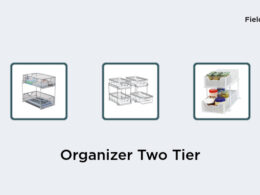Determining the Percentage of Your Home Used for a Home Office
If you use a part of your home for business purposes, you may be entitled to take a home office deduction from your federal income taxes. Determining what percentage of your home can be considered a home office is a crucial step in calculating this deduction. To find out what percentage of your home can be claimed as a home office, you need to calculate the portion of your home that is used for business purposes. This calculation is based on the square footage of your home office and the total square footage of your home. For example, if your home measures 2,000 square feet and your home office occupies 300, then your office takes up 15% of your home. This 15% is the percentage of home-related expenses and costs that can be deducted as indirect expenses for your home office.Understanding the Calculation for the Home Office Space Deduction
Knowing the percentage of your home that is used for business purposes is just the beginning of calculating your home office tax deduction. Once you have determined the percentage, you will need to establish the home-related expenses that can be claimed. The home-related expenses that can be claimed include rent, utilities, insurance, property taxes, home repairs, and maintenance. To determine how much you can claim, you will need to multiply your total home-related expenses by the percentage of your home that is used for business. For instance, if your total home-related expenses for the year amount to $20,000 and the percentage of your home used for business purposes is 15%, then you can claim a deduction of $3,000 as indirect expenses for your home office. Remember: The home office space deduction is only available to those individuals who use a portion of their home exclusively for conducting business activities.Making the Most of Your Home Office Space
Creating an efficient and productive home office space is essential for anyone who works from home. Here are some tips to help you make the most of your home office space:- Designate a Specific Space: Dedicate an area of your home solely for your work activities. This will enable you to focus solely on your work without distraction.
- Invest in Comfortable Furniture: Investing in comfortable seating and a desk that supports your posture will improve productivity and reduce the likelihood of injuries and physical strain.
- Illuminate Your Space: Proper lighting can help to prevent eye strain and headaches. Invest in a quality desk lamp and overhead lighting to create a productive work environment.
Creative Tips for Creating a Productive Home Office
Here are some creative tips to help you create an inspiring and productive home office space:- Bring Nature In: Adding plants and flowers to your office space can provide a boost to your mood and creativity.
- Personalize Your Space: Use artwork or decorative items that reflect your personality and taste to make your workspace feel more inviting.
- Invest in Office Supplies: Stock up on essential office supplies to keep your workspace organized and efficient.
Factors to Consider When Designing Your Home Office Space
When designing your home office space, there are several factors to consider:- The Nature of Your Work: Consider your specific work tasks when designing your workspace. If you require ample desk space, make sure to invest in a large desk area.
- Electrical Outlets: Ensure that there are sufficient electrical outlets in close proximity to your workspace to prevent cable clutter and tripping hazards.
- Privacy: If your workspace is located in a highly trafficked area or your home is noisy, invest in soundproofing measures or noise-cancelling headphones.
The Benefits and Drawbacks of Working from Home
Working from home can provide several benefits, including:- Flexible Schedule: Working from home allows individuals to customize their workday around family and personal obligations.
- No Commute: Eliminating the daily commute can result in reduced travel expenses, less stress, and improved work-life balance.
- Productivity: Working from home can lead to increased productivity due to fewer distractions and a more comfortable and personalized workspace.
- Isolation: Working from home can be a lonely experience with limited opportunities for socializing.
- Distractions: A home environment can be filled with distractions such as housework, children, and family members.
- Lack of Routine: Without adhering to a regular schedule, it is easy to lose track of time, resulting in unproductive workdays.
Strategies for Balancing Work and Life When Your Home is Your Office
When your home is also your office, it can be challenging to balance work and life. Here are some strategies to help you achieve this balance:- Establish Boundaries: Set clear boundaries between work and personal life to prevent burnout.
- Create a Schedule: Create and stick to a work schedule to ensure that work is completed efficiently, allowing you to enjoy your personal life.
- Take Regular Breaks: Taking breaks throughout the day promotes mental and physical wellness and prevents burnout.






















